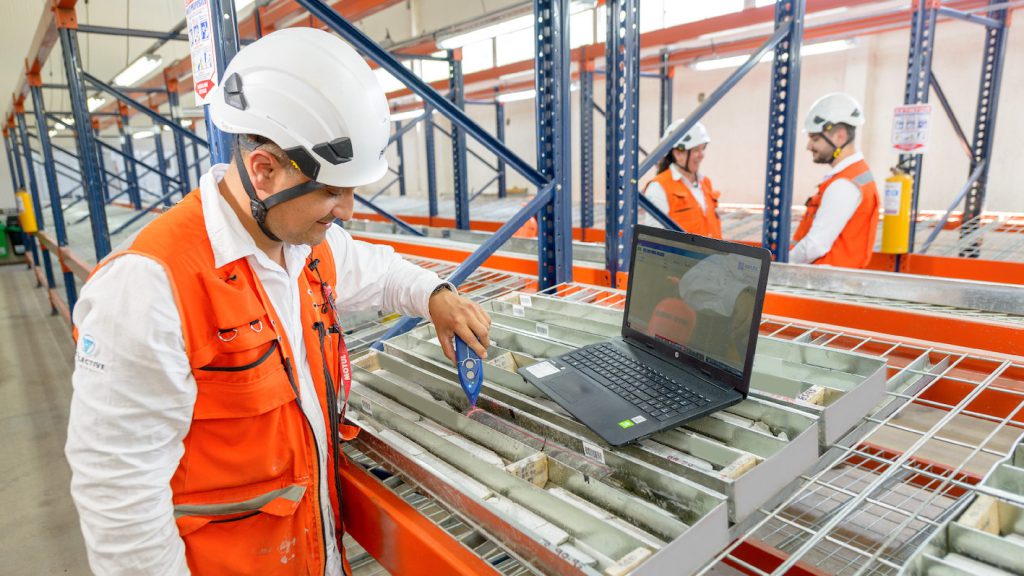Collective Mining drills 1.91 g/t AuEq over 55.2 metres at Guayabales, Colombia

Collective Mining Ltd. [CNL-TSXV; CNLMF-OTCQX] reported assay results from three underground drill holes completed at the Olympus target, which forms part of the company’s Guayabales project in Caldas, Colombia.
Mineralization at Olympus is characterized by zones of sheeted, late-stage carbonate base metal (CBM) veins and veinlets impregnating either porphyry diorite host rock or schist host rock. The Olympus target area measures 600 metres north-south by 400 metres east-west. Previously, the Company announced drilling results from drilling in the northern portion of the Olympus target area which included discovery hole OLCC-3 which averaged 301.9 metres at 1.11 g/t AuEq (gold equivalent).
Ari Sussman, executive chairman, commented: “Inspection of drill core and underground sampling at the Olympus target point to the potential for a mineralized porphyry system at depth. It is entirely conceivable that below Olympus we might find the Apollo porphyry system’s down plunge extension or another porphyry intrusion altogether. This model is directly comparable to the Marmato mine located less than 4 km away and along the same mountain slope. Marmato hosts a CBM vein system similar to Olympus, which lies atop a porphyry at depth. We are truly blessed with remarkable geology. Hydrothermal fluid systems this robust in both nature and scale are exceedingly rare globally.”
Assay results for underground drill holes OLCU-1 to OLCU-3 are announced in this press release. All three holes were drilled from an underground chamber constructed within shallow ancestral underground workings located approximately 280 metres west and northwest of the current known northern extent of the Apollo porphyry deposit.
OLCU-2 was drilled northeastwards at a shallow dip below old workings from the underground chamber to a maximum depth of 331.8 metres. The hole was drilled orthogonally to CBM veins mapped in higher levels within the historical workings. The hole intersected two zones of polymetallic CBM veins and veinlets returning the following results: 55.25 metres at 1.91 g/t AuEq from 172.6 metres including 7.45 metres at 8.69 g/t AuEq; 47.17 metres at 0.94 g/t AuEq from 284.15 metres downhole.
Drill hole OLCU-3 was drilled in a NNE direction at a shallow dip from the underground chamber to a final depth of 290.2 metres and intersected a CBM vein zone with similar characteristics to those described in OLCU-2 and grading 0.81 g/t AuEq over 17.45 metres. The CBM zone is associated with intense sericite alteration and this mineralized system overprints potassically altered, porphyry diorite.
Hole OLCU-1 failed to intersect the targeted CBM zone due to drilling problems related to faulting and a historical mining cavity.
The current underground drilling and previously reported Olympus drill results outline multiple CBM vein zones covering an area of 600 metres north-south by 400 metres east-west which is open to the NW and SE as the vein systems strike in this direction.
The CBM vein intercepts in OLCU-2 are located only 280 metres to the northwest of the known extent of Apollo porphyry system mineralization intercepted in step-out drill hole APC-17. Drill hole APC-17 was an important step-out hole which significantly extended the size of the Apollo deposit northwards returning a long intercept of 547.65 metres at 1.03 g/t AuEq. This hole was terminated at 912.8 metres due to rig capacity limitations and bottomed in strong mineralization with the final 2.75 metres averaging 1.56 g/t gold and 9 g/t silver.
Two drill holes (APC-32 and APC-34) were completed to test a surface soil anomaly for copper located 150 metres south of the southern limit of the currently defined Apollo porphyry system. The holes were collared from a newly constructed Pad 8 and drilled steeply northwards and westwards respectively, below the soil anomaly.
Both holes intersected potassically altered porphyry diorites with low density of quartz-molybdenum-pyrite-pyrrhotite-chalcopyrite veins. Neither hole returned significant precious or base metal values. The exploration team are using the trace element data to understand the location of these holes and their alteration patterns in comparison with the Apollo porphyry system.
Collective Mining is a copper, silver and gold exploration company with projects in Caldas, Colombia. The company has options to acquire 100% interests in two projects located directly within an established mining camp with ten fully permitted and operating mines.
The company’s flagship project, Guayabales, is anchored by the Apollo target, which hosts the large-scale, bulk-tonnage and high-grade copper-silver-gold Apollo porphyry system. The near-term objective is to drill the shallow portion of the porphyry system while continuing to expansion the overall dimensions of the system, which remains open in all directions.
Management and insiders own nearly 52% of the outstanding shares of the company.
